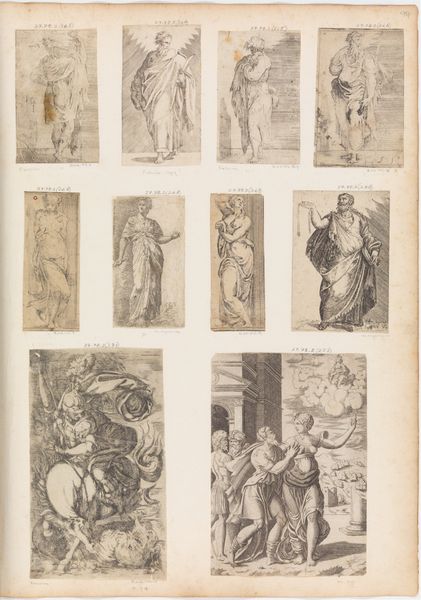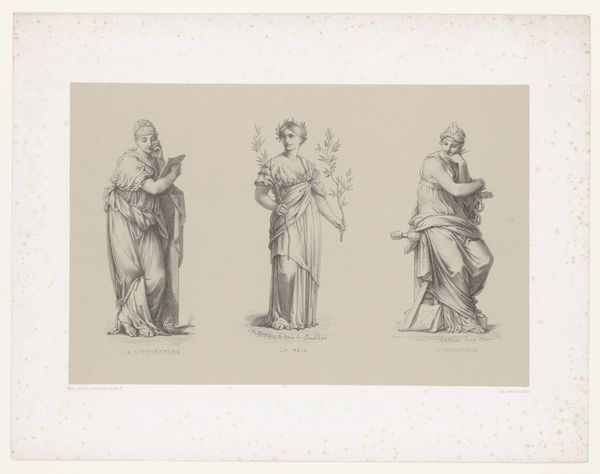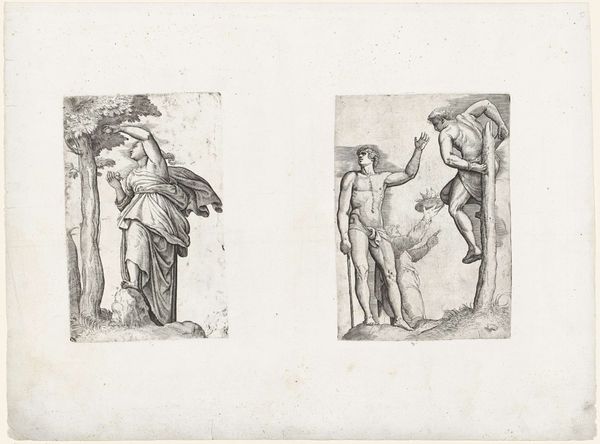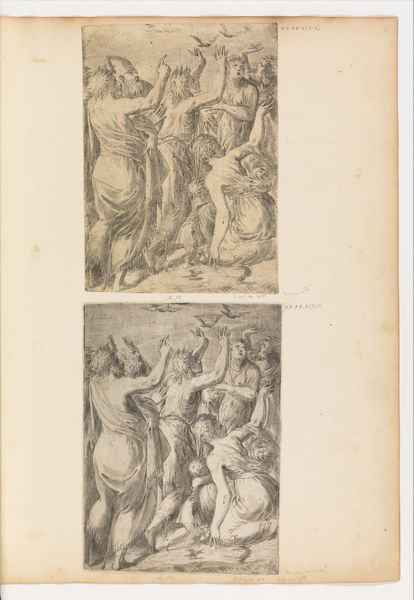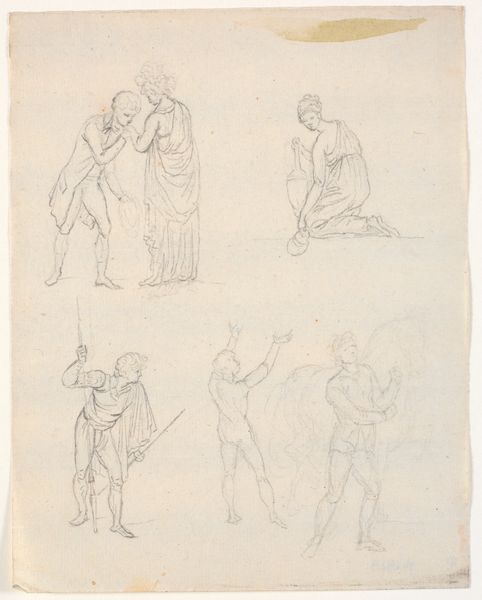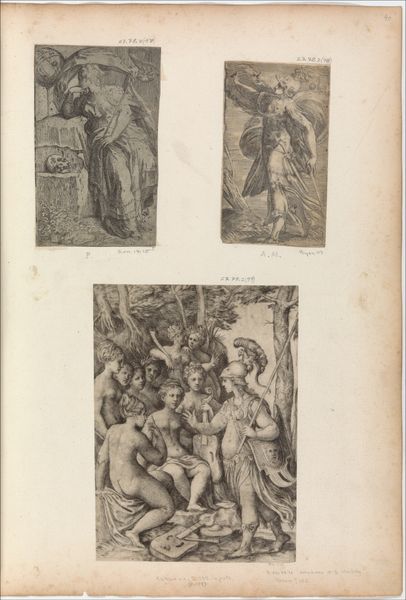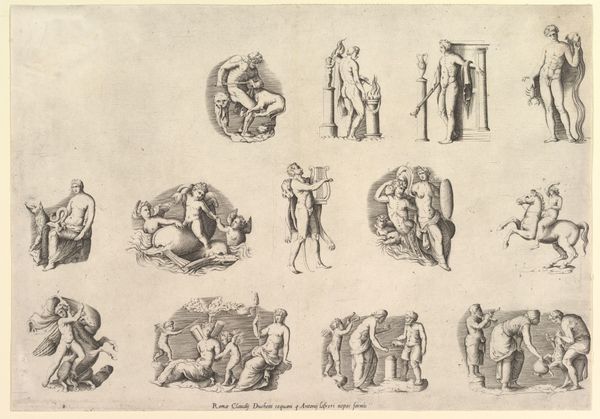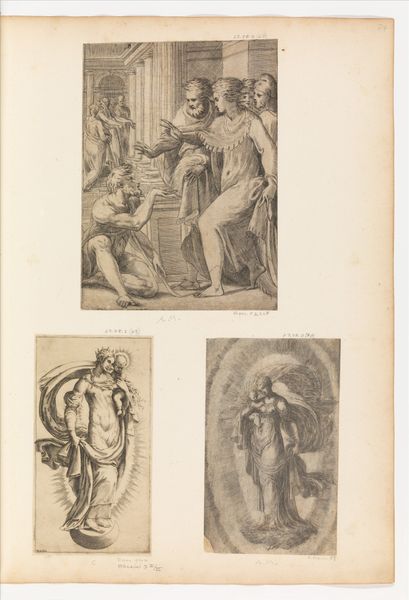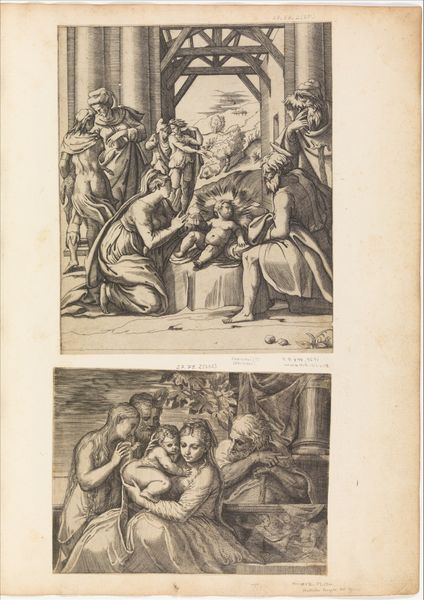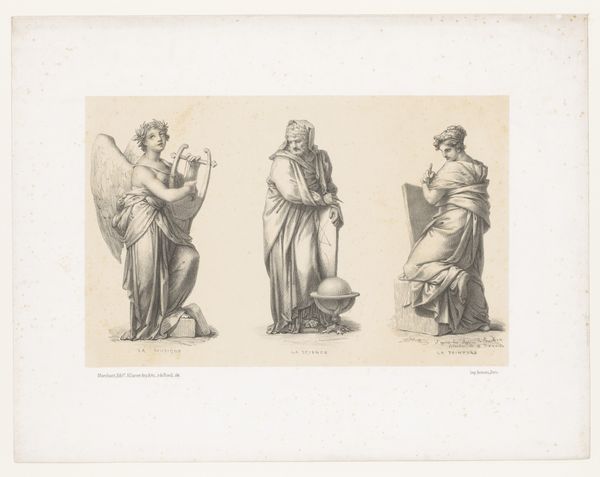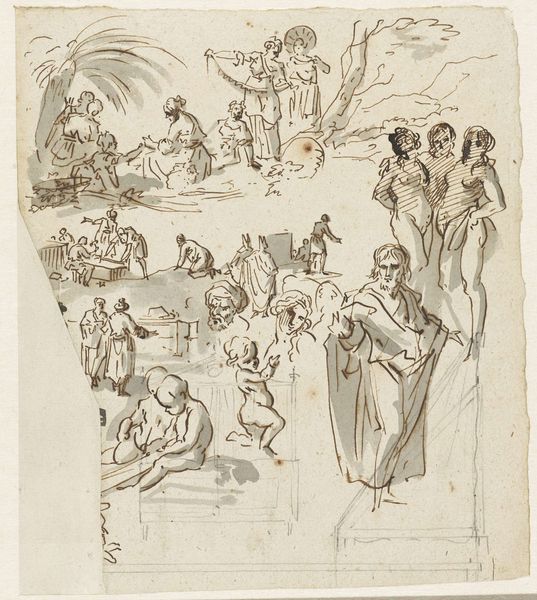
Kleederdragten / Vier en twintigste plaat. / Grieken. / Uit den tyd vóór Christus c. 1843 - 1920
0:00
0:00
print, engraving
# print
#
greek-and-roman-art
#
old engraving style
#
figuration
#
ancient-mediterranean
#
history-painting
#
academic-art
#
engraving
Dimensions: height 443 mm, width 348 mm
Copyright: Rijks Museum: Open Domain
Editor: Here we have a print from somewhere between 1843 and 1920 by Andreas Müller, titled "Kleederdragten / Vier en twintigste plaat. / Grieken. / Uit den tyd v\u00f3\u00f3r Christus" which, roughly translated, depicts Greek costumes from before Christ. It's quite academic in style, and portrays various figures in classical attire. What sort of narratives do you see embedded within this piece? Curator: This print offers us a glimpse into 19th-century European understandings – or rather, constructions – of ancient Greece. The artist isn't just showing us clothing; he’s participating in a long history of imagining and idealizing a classical past. How does this idealized depiction serve particular cultural or political purposes? Consider the use of "ancient Greece" as a touchstone for European identity and power. Editor: That’s fascinating! It does seem to present a very specific vision of antiquity, very orderly and idealized. So, you’re saying it’s not necessarily about historical accuracy, but about constructing a certain image? Curator: Exactly. It’s about using history to legitimize contemporary ideologies. Think about who is included and excluded, what aspects of ancient Greek society are emphasized, and how this image might reinforce existing power structures. Who gets to define and control the narrative around the past? Editor: I see. So, beyond the aesthetic qualities, it’s a reflection of the artist's contemporary social and political landscape. Curator: Precisely. This piece speaks volumes about 19th-century Europe's relationship to its own past, revealing how art can be a tool for shaping and reinforcing cultural narratives. Editor: That gives me a lot to consider; I’ll never look at historical depictions the same way. Thanks for shedding light on that! Curator: My pleasure. Questioning the narratives behind art is how we connect it to our present, revealing its continued relevance.
Comments
No comments
Be the first to comment and join the conversation on the ultimate creative platform.
